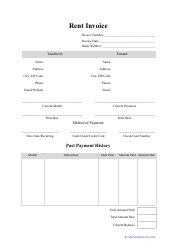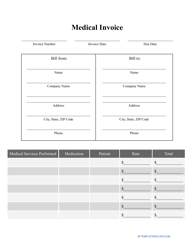Invoice Fraud: Who Is Liable?

Scammers see an opportunity to steal money from absolutely everywhere and unfortunately, invoice fraud is no exception. Therefore, it is crucial that you are aware of ways that scammers can try and exploit an invoice for their own personal gain and more importantly, know the various steps to take in invoice fraud prevention to ensure that you or your business do not become victims of this crime.
What Is Invoice Fraud?
Invoice fraud will usually involve a situation when a scammer, posing as an official representative of a company, tries to alter invoice payment information for you to send payments to their bank account, rather than the bank account of the supplier. Such requests should be seen as an immediate red flag. This should be treated with the utmost caution as this money is close to impossible to return once it is sent out.
In other instances, a fake invoice can be presented which may look exactly like the real deal. Fraudsters are professionals in this field, therefore it is extremely difficult to tell apart a real representative or invoice from fake email invoice fraud. Usually, the email address that fraudsters use looks exactly like the official email addresses that you are used to seeing. There are even cases when scammers can break into an official email and use that to get in touch with clients. The emails themselves are written relatively well and all of these factors make it difficult to distinguish between a fake and a real email.
Fraudsters will often ask for confidential information or request a payment to a different account. If you encounter this with an invoice, or you have received an invoice that doesn’t quite match what you would expect, you should take some time to consider the authenticity of the email. It is better to be safe than sorry and it is always worth getting in touch with an official representative via telephone to clear up any questions.
What Is Vishing?
Vishing, commonly known as voice phishing, is a crime that involves stealing personal information from mobile phones. Often this is done through a telephone call where a scammer will pose as an official from a bank, tax office, police, or any official government structure. Most of the time they will already possess some basic information about you such as your full name, which lures callers into a false sense of security. In a typical vishing scam, the fraudsters often immediately create panic in the targeted individual, sometimes even issuing threats about an arrest or closure of a bank account. By exploiting this state of shock, they subtly pull out confidential information which they can then exploit for their personal gain.
How Does Invoice Fraud Happen?
A malicious individual will attempt vendor invoice fraud by first spending time gathering information regarding vendors that work with a targeted company. The scammer will then falsify emails (there are several illegal ways of doing this) and submit a fake invoice or requests to alter the payment details of an existing invoice. The client thinks nothing of it, after all, everything looks and may even feel genuine and goes along with what the fraudster is requesting, under the assumption that this is official information from a partner company. Once they make that payment, the money is gone and will most likely not be returned. This can have catastrophic effects on businesses.
There are various different types of invoice fraud; you can read more about our list of “5 Common Types of Invoice Fraud.” Some examples can include:
- Fake invoices;
- Repeat invoices;
- Payment details changes;
- Overcharging;
- Not including discounts.
Fraudsters know full well that with big businesses in particular, they do not have the time to examine every single invoice in great detail. Therefore, they try to exploit this by adding inaccuracies to the invoice.
How to Detect Invoice Fraud?
There are a number of things to look out for if you think you have received a fake invoice or an email from somebody posing as an official representative. Take into account the tips below:
- Request for payment details. This almost never happens, so it is best to call up the official telephone number that you have and double-check if the information you have received is legitimate;
- Look out for the language and grammar used in the invoice email. If the language seems unprofessional and has errors, rethink whether this came from the genuine company or not;
- Amount to be paid. Scammers usually include a rounded-off amount in an invoice, for example, $5,000 rather than $4897,89;
- An invoice close to the maximal limit for approval. For example, the maximal approval limit is $3,000 and the invoice received is for $2,995;
- Being bombarded with a large number of invoices from a single vendor;
- Suspicious email addresses;
- Invoices for general, unclear services or products;
- Mathematical errors that concern sums and quantity.
If you notice any of these tips, you should get in touch with the invoice provider directly, not using any contact information in the received email that you believe could be malicious.
How to Prevent Invoice Fraud?
There are several ways in that you can prevent yourself from becoming a victim of invoice fraud. Firstly of course, the main suggestion is to carefully read over each invoice. If you have any suspicions, particularly relating to a change in payment information, you should get in touch with the company directly. Ensure that you have the contact details of more than one person that you can reach out to in case you sense a potential scam.
Maintain confidentiality and do not leave any invoices in places where others can see them. You can also compare the invoice to other invoices received and make sure that you can relate this invoice to a purchase order and/or a receipt. If you have received an invoice from a new vendor and you have doubts, research them online as often these invoices are made using fake business names.
Related Topics:






